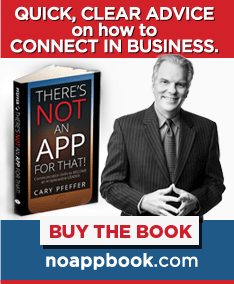During his years in public life, Richard Nixon had the unfortunate reputation of having “shifty eyes.” Whether that was just my Grandmother’s dislike for the guy or it was based in fact, more than just my kindly Grandma had a distrust of President Nixon. Why? Well, let’s just say he didn’t do himself many favors when he was on TV or in front of audiences. Nixon shifted his eyes regularly, and it created problems for him. Let’s see what we can learn from the guy they sometimes called “Tricky Dick” and make sure we are not falling into the same trap.
TV Interviews: Just last week I got into a great discussion with a client about where you look and why during a TV interview. (He related a hilarious story about an interview he witnessed where just before the interview went “live” an advisor to the person being interviewed shouted, “Remember, look at the camera!” Consequently, during the entire interview, the guy stared into the camera while the person who was asking the questions and sitting right next to him was ignored! A true YouTube blooper moment.)
As a general rule, look at the person who is interviewing you. That is the expectation of the audience and you connect more when you are talking to a person and not a cold camera lens. Focus on the person. If you find yourself shifting back-and-forth between the interviewer and the camera you will get the Richard Nixon “shifty eyes” reputation without even knowing it!
Sometimes, because of budget cuts and staff shortages, no reporter will show up for your interview and the photographer will ask you the questions while also running the camera. Where do you look? That gets a little tricky. Try to focus just off to the side of the camera when answering questions, or have someone from your staff stand there so you still can focus on a person when speaking.
All of this comes down to the audience’s expectation. They expect they are going to be “observers” to the interview process and you mess with that expectation when you stare directly at them during your answer. One of the only exceptions to this rule is when you are asked to do a live interview at a remote location. That is often explained by the news anchor and you look into the camera because you are speaking directly to the newsperson. It’s often uncomfortable at first and I’ve worked with clients on perfecting this skill so they can come off in the best possible light.
Live Audiences: Of course when you are giving a speech in front of a live audience, you look at the people sitting in front of you! Again, easier said than done. Be sure you are moving your eyes around the audience, focusing on an individual for a few seconds, and then moving on. Practice at this process and have a colleague help you by sitting in the audience and observing your progress. Believe me, the more you do it, the more comfortable you will become.
You will know when you are getting better because you eye movements will become more fluid — comfortably gliding around the room and avoiding that terrible title you never want associated with your name: shifty.

